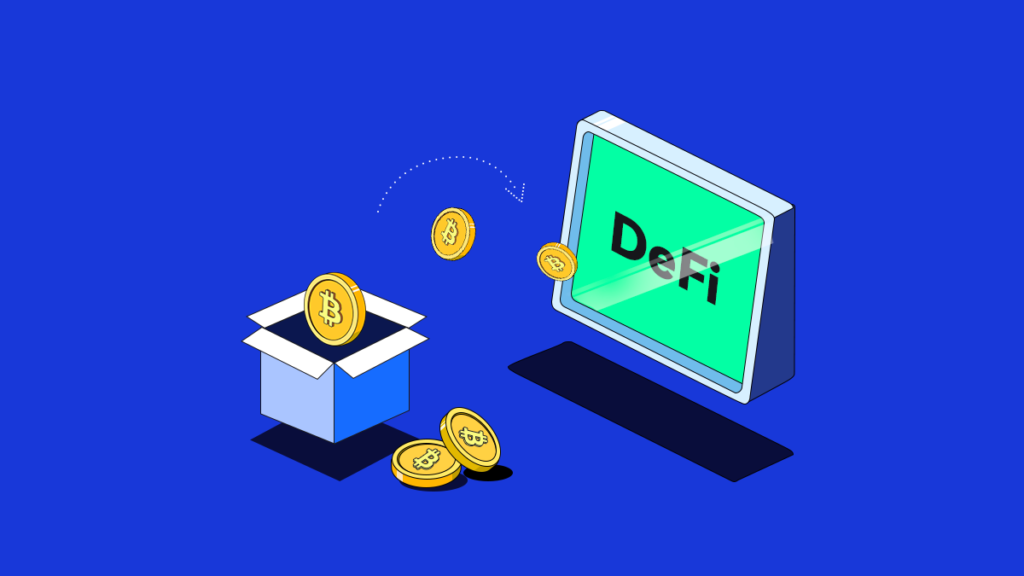Traders today are standing at a crossroads.
One side? Traditional forex – regulated, consistent, proven.
The other? Decentralized finance (DeFi) – open, fast, and constantly shifting.
Each side offers unique opportunities. But they also come with different risks, tools, and systems.
If you’re serious about building a long-term trading career, especially with a forex prop firm, understanding how these two models work is essential, not optional.
Let’s break it all down.
What is DeFi?
DeFi stands for Decentralized Finance, and it’s exactly what it sounds like.
A financial system with no central authorities. No banks. No brokers. No intermediaries.
Instead, it uses blockchain networks (mainly Ethereum), smart contracts, and decentralised exchanges (DEXs) to let users trade, lend, and earn directly from their crypto wallets.
Everything runs on code.
The assets traded here aren’t your standard currencies. They’re tokens. Think stablecoins like USDC, governance tokens, utility tokens, and yield-generating coins.
The appeal? Full control, lower fees, open access, and innovation.
The catch? It’s unregulated. And if things go wrong, there’s no safety net.
The Traditional Forex Setup
On the other end is forex – the most liquid market in the world, moving over $6 trillion per day.
Here, you’re trading national currencies through a network of banks, brokers, and forex prop firms.
What makes it work is structure. Regulated brokers offer defined trading conditions. Prop firms provide funding and risk management tools.
The best prop trading firms give traders a clear path: pass an evaluation, get funded, and scale.
Forex trading may not have the excitement of DeFi, but it has what a lot of traders need: consistency, reliability, and support.
Major Differences Between DeFi and Forex
Asset Control
In DeFi, you own your wallet and the private keys. Your money isn’t stored on an exchange or with a broker. That means no middlemen – but also no fallback if you lose access.
Forex accounts, especially with prop firms, are held on secure, centralised platforms. You don’t own the funds, but you do get protection, insurance, and clear rules.
Accessibility
DeFi doesn’t close. You can trade anytime, from anywhere, with just an internet connection.
Forex trading occurs 24 hours a day, Monday through Friday, following the global market cycle. It’s accessible, but still filtered through brokers who may limit the instruments or leverage available based on the region.
Risk Management
DeFi projects live on smart contracts. So, if there’s a flaw in the code, funds can be drained. Additionally, hacking is common, and some platforms can vanish overnight.
Forex has regulations. If you’re with a licensed broker or forex prop firm, your account follows industry standards. Risk is part of the game, but the rules are clearer, and the protections are stronger.
Leverage and Capital
DeFi allows you to take on significant leverage with minimal oversight. That might sound attractive – until it wipes you out.
Forex leverage is capped by regulators and varies by region. But when you go through one of the best forex funded trader programs, you’re trading large amounts of capital with clear rules.
The firm backs you. They manage the downside while giving you room to grow. That’s real funding with accountability.
Why Traders Explore DeFi
DeFi offers full autonomy. You’re not asking permission to trade. There are no evaluations or restrictions.
It also moves fast. New protocols are launched weekly, and creative traders find unique ways to generate returns, from staking to liquidity mining and flash loans.
But the speed of innovation comes with high volatility. One project can promise high yield today and disappear tomorrow.
There’s potential, no doubt. But without structure or support, new traders often end up making emotional decisions, misjudging risk, or losing funds entirely.
Why Forex Still Leads
Forex isn’t perfect, but it’s predictable.
You’re trading real-world currencies with deep liquidity and tight spreads. You can work with regulated brokers, analyse historical patterns, and develop a structured plan.
More importantly, you can grow with support.
A forex prop firm doesn’t just give you capital. It gives you accountability, performance feedback, and a scalable environment.
You’re building habits that lead to long-term success, not only chasing short-term upside.
Can DeFi and Forex Coexist?
Absolutely.
DeFi and forex aren’t enemies. They’re different tools. And smart traders are already figuring out how to use both.
Some of the best prop trading firms are watching DeFi closely, looking at ways to integrate tokenised payouts, blockchain performance tracking, or hybrid models that allow for both crypto and fiat trading.
On the flip side, DeFi protocols may start to mimic prop firm structures, introducing performance-based access to capital or community-funded trading pools.
The goal isn’t to choose one over the other. It’s to understand when to use each.
The Role of Forex Prop Firms Going Forward
Firms like TopOneTrader are positioned right at the middle of this shift.
They offer a clear structure:
- Prove you can manage risk
- Trade with real capital
- Scale up as your results improve.
But they’re also flexible enough to evolve with the market.
As DeFi grows and matures, expect forward-thinking firms to add new tools, such as crypto evaluations, blockchain analytics, and even decentralized funding structures.
The future isn’t one system replacing the other. It’s smart integration. And the best firms will be the ones that help traders move between both worlds.
Final Take
DeFi gives traders speed, access, and full control. Forex gives them depth, structure, and trust.
The right choice isn’t about trends. It’s about what fits your goals, your style, and your risk tolerance.
Start where the path is proven – with a forex prop firm that helps you build the foundation. Then test the waters of DeFi with care, using the same discipline and strategy you learned in the forex world.







